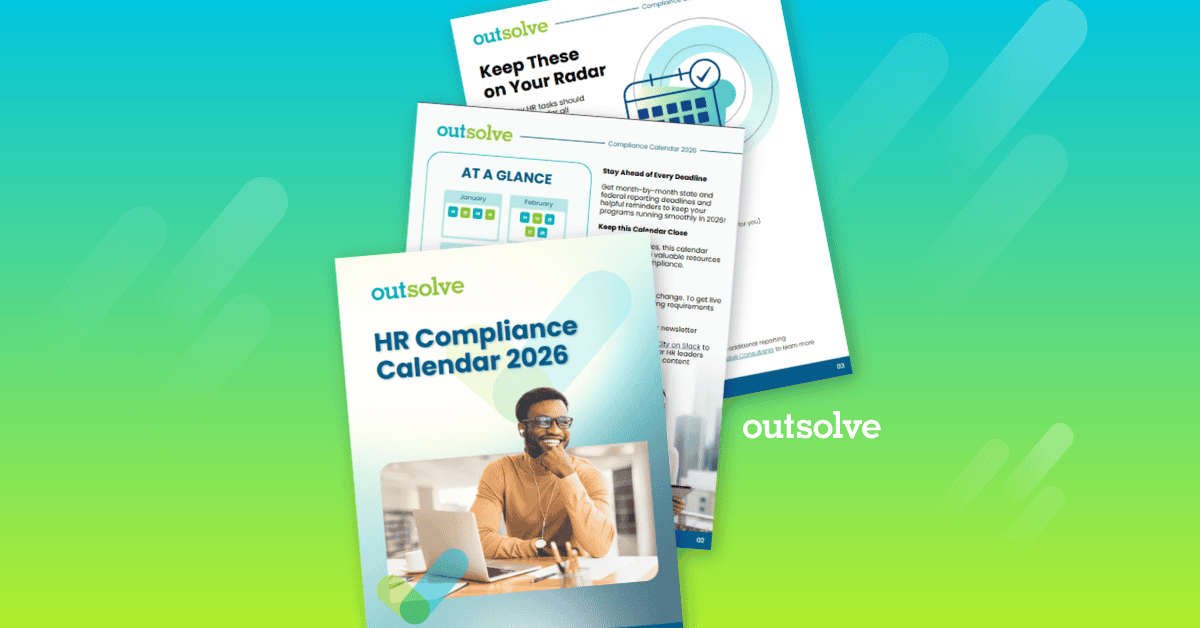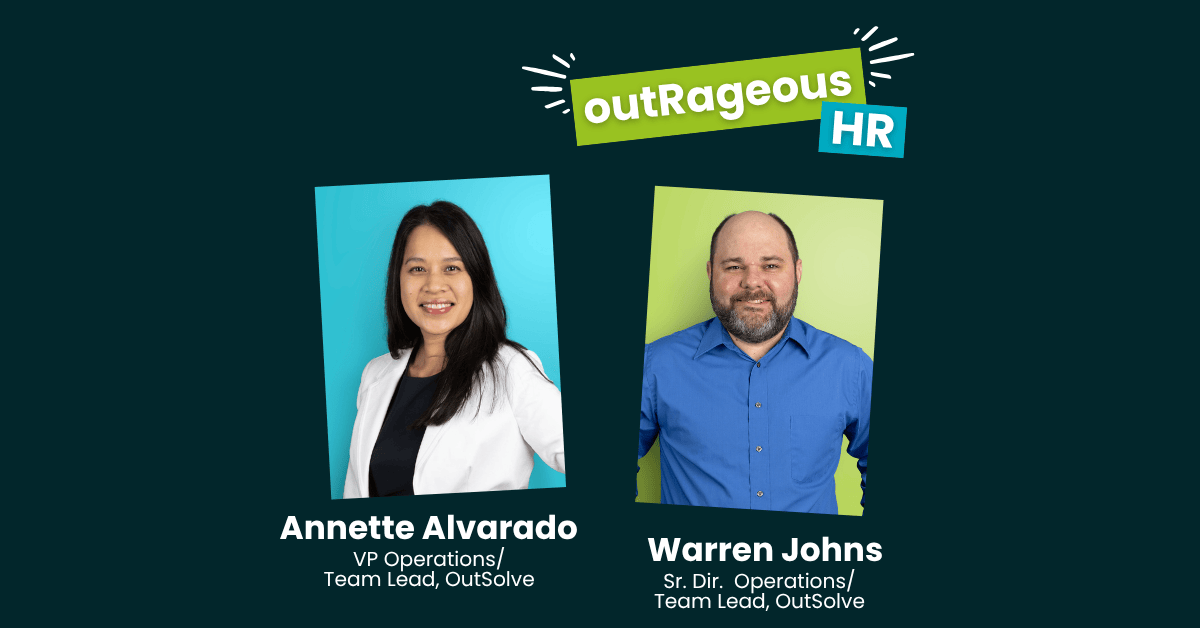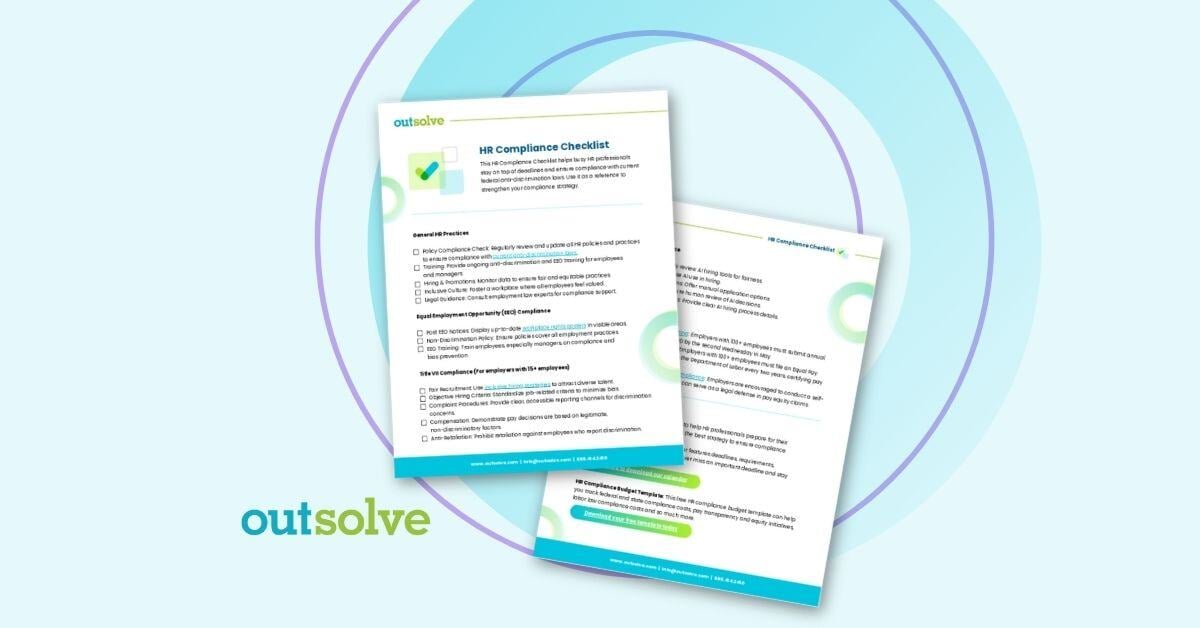3 min read
The Future of Work Is in Accommodating Employees, but Some Companies Are Still Apprehensive
 Sarah Bernard
:
Nov 29, 2023 10:45:00 AM
Sarah Bernard
:
Nov 29, 2023 10:45:00 AM
.png)
OutSolve's workforce inclusion partner, Inclusively, is an occasional contributor to our blog. The views, thoughts, and opinions expressed in this article belong solely to Inclusively and do not necessarily reflect the viewpoint of OutSolve or its employees. The following post was previously released on Inclusively's blog.
Most employees want their companies to be flexible, accommodating, and inclusive. They want a culture that reflects their highest aspirational values. They want a workforce that’s diverse and includes disabled workers. Companies want employees to work in the way that allows them to bring their full selves to the job — and, in turn, to be more productive. But they may be hesitant or see obstacles in the way, particularly if they’re a large company.
Maybe they’re under the mistaken impression that accommodations for people with disabilities are expensive (in reality, they cost little or nothing at all.) Or maybe they worry that they’ll be bombarded with accommodation requests and won’t quite know how handle them (HR teams can handle that with the right tools).
It may also come down to generational differences. Millennials and Gen Z workers seem to want more accommodations and flexibility, whereas CEOs, who often come from an older generation, have a different expectation. “Just go to work” is a good summation of their stance.
There are different perspectives and expectations about what work should be, and I think that also feeds into apprehension among employers. It might be a generational difference in how they look at work, or it could just be a fear of opening some unseen can of worms.
But the tide is shifting. We can see it on the ground and in the data.
According to Forrester, companies are increasingly committing to accessibility: 36% of global design teams have expressed executive-level commitments to create accessible digital experiences (that number increases to 48% when you include companies that haven’t made formal executive commitments, but are making changes driven on the ground by employees). And companies are increasingly seeing that an accessibility plan is part of a comprehensive DEI strategy.
Large companies are also having to deal with changes on the ground, as more employees acknowledge their needs.
We’re seeing clients get flooded with accommodation requests as they mandate returns to the office (and we’re helping them handle these requests). Anecdotally, a large financial services client saw an immediate 100% increase in accommodations requests when they made people come back to the office. Another Fortune 500 company has increased their accessibility team from two to five people in just one year.
Big companies are engaging this issue now. There are major reasons for this shift.
There’s a productivity imperative. Gallup estimates that employees who are not engaged or who are actively disengaged cost the world $7.8 trillion in lost productivity. In case you’re wondering, that makes up 11% of global GDP. By creating a more flexible and inclusive workplace, you ensure workers are happier — and more engaged, thus offsetting those lost productivity costs.
Millennials and Gen Z are driving change. The nature of work is evolving, and these two groups will make up a significant majority of the workforce soon. Millennials and Gen Z have grown up with the ability to personalize almost everything in their lives, and they’re demanding the same flexibility in the workplace. It’s worth noting that by 2030, millennials and Gen Z will make up two-thirds of the workforce. So, whether companies like it or not, they’re being pushed in this direction.
People are used to working a different way now. Another factor to consider is the impact of back-to-office mandates that companies are implementing in response to how work was conducted during the pandemic. People have gotten accustomed to having breaks when they want them and addressing their mental health needs. Employees are looking to take these types of accommodations into the office with them.
Accommodations are not actually expensive. There’s a misconception about the financial burden of creating an accessible workplace. But one survey found that half of all accommodations cost nothing. 43% cost $300 or less.
Disabled employees are already present in companies. 30% of the existing workforce meets the federal definition of having a disability, yet only 3% actually disclose it. This low disclosure rate is not just because of the attached stigma; it’s also because there hasn’t been a compelling reason for people to disclose, given that employers have not been very accommodating in the past. But this is changing, as we can see with the number of folks who self-disclose on our platform — and with the number of companies eager to hire them.
There's an undeniable shift happening.
Tools like ours are proving beneficial for promoting diversity in all its forms, including those with disabilities.
They’re also creating a more universal workplace where any individual can personalize their work environment according to their needs. Whether it’s a single parent requiring flexible work hours or someone dealing with depression who needs specific accommodations, the system is becoming more inclusive.
And companies increasingly recognize the need for a more inclusive work environment. Retain product has seen even more traction than our initial employment platform, signaling that companies are eager for solutions — not just for prospective employees, but for existing ones.
These companies see that there are fewer and fewer obstacles to inclusion.
And that’s good for everyone.
Sarah Bernard is the Co-Founder and COO of Inclusively.
Weekly OutLook
Featured Posts

New Year, New Deadlines: 2026 HR Compliance Calendar

outRageous HR: Plan Now or Pay Later
Related Posts

In-House or Outsourced I-9 Management: Which Is Best for Your Organization?
Every U.S. employer, regardless of size or industry, is required by law to confirm each new hire’s identity and verify that they are authorized to...

outRageous HR: Building a Compensation Strategy That Actually Works
If your compensation strategy is mostly “gut feeling” plus whatever you did last year… it’s time to rethink your approach.

HR Compliance Checklist: What Every HR Pro Needs to Know
During times of sweeping change to federal laws, and with new state laws being enacted, it's more important than ever for HR professionals to ensure...